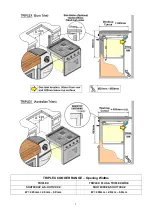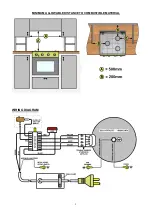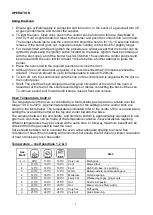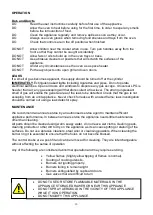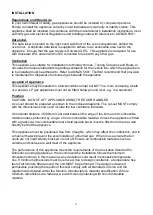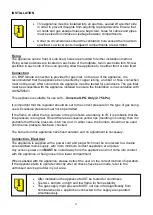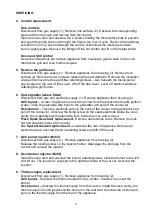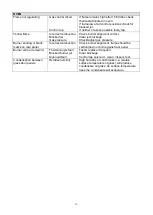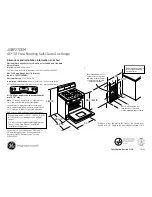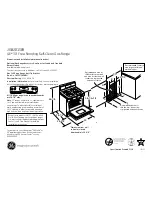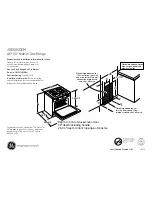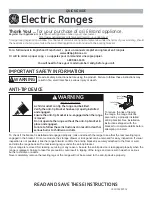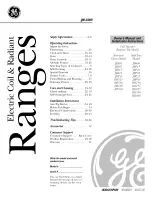
9
OPERATION
Using the Oven
1.
Ensure gas cylinder/supply is connected and turned on. In the event of a gas smell turn off
at gas cylinder/mains and contact the supplier.
2.
To light the oven: Open door, push in the control knob and turn to full rate (Gas Mark 9,
240°C). Hold a lighted match or taper to the burner and push the control knob in and hold.
The burner should ignite, and the control knob should be held in for 10 -15 seconds before
release. If the burner goes out, repeat procedure holding control knob for slightly longer.
3.
For models fitted with Spark Ignition the procedure is similar except that the burner can be
ignited by depressing the ignition button located on the fascia. Ignition must be carried out
with the door open, and if the burner has not lit within 15 seconds the control knob should
be released and the oven left for at least 1 minute before a further attempt to ignite the
burner.
4.
Place the oven shelf in the required position and close the door.
5.
Although the oven does heat up quickly, it is recommended that 10 minutes preheat be
allowed. The oven should be up to full temperature in about 15-20mins.
6.
To turn off: turn the control knob until the line on the control knob is aligned with the dot on
the control panel.
7.
Shelf: The shelf has been designed to allow good circulation at the rear of the oven. A
raised bar at the rear of the shelf prevents trays or dishes contacting the back of the oven.
To remove a shelf, pull forward until it stops, raise at front and remove.
Oven Temperature Control
The temperature in the oven is controlled by a thermostatic gas tap and is variable over the
range 130°C to 240°C. Approximate temperatures for the settings on the control knob are
shown in the table below. The temperatures indicated refer to the centre of the oven and at any
setting the oven will be hotter at the top and cooler towards the base.
The variation between top and centre, and centre to bottom is approximately equivalent to one
gas mark. Good use can be made of the temperature variation in several dishes requiring
different temperatures may be cooked at the same time. In this way maximum benefit can be
obtained from the gas used to heat the oven.
Care should be taken not to overload the oven, allow adequate spacing to ensure free
circulation of heat. When roasting with aluminium foil ensure the foil does not impair circulation
of heat or block any oven flue outlet.
Temperature
– shelf positions 1, 2 & 3
Gas
Mark
Dish
¼ - ½
90°C
110°C
130°C
Very cool
Meringues
1
110°C
130°C
150°C
Cool
Stewed fruit
2
120°C
140°C
160°C
Cool
Rich fruit cake, rice pudding
3
130°C
150°C
170°C
Warm
Baked custard, shortbread fingers
4
140°C
160°C
185°C
Moderate
Victoria sponge
5
155°C
180°C
200°C
Fairly hot
Whisked sponges, ginger nuts
6
170°C
190°C
215°C
Hot
Short crust pastry
7
185°C
210°C
230°C
Hot
Bread, scones, flaky pastry
8
200°C
220°C
245°C
Very hot
Puff pastry
9
215°C
240°C
260°C
Very hot
Quick browning


